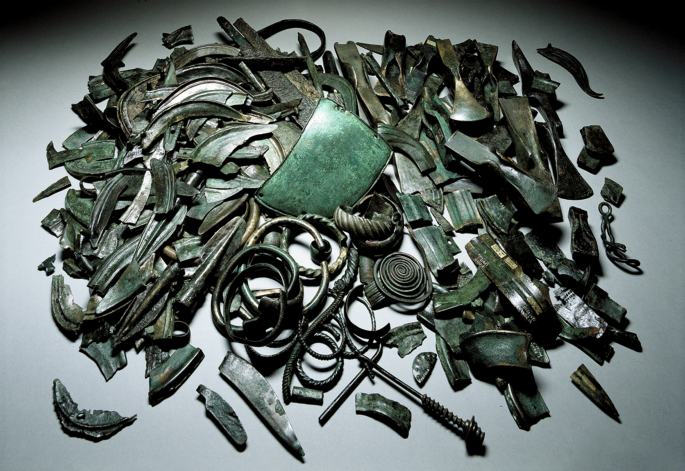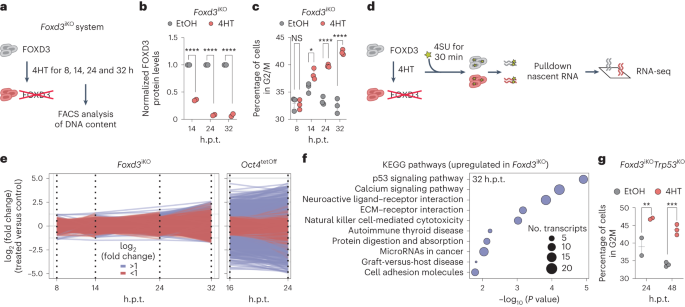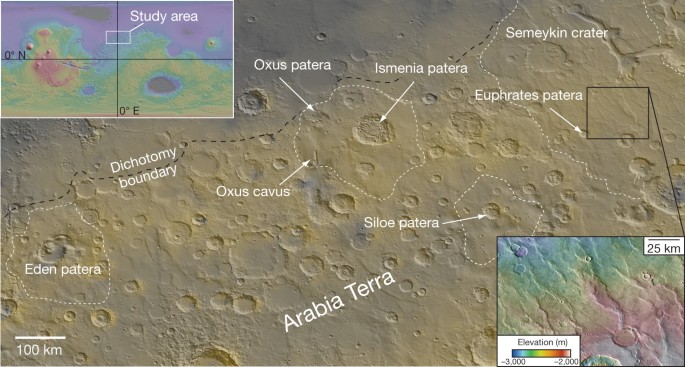
- Select a language for the TTS:
- UK English Female
- UK English Male
- US English Female
- US English Male
- Australian Female
- Australian Male
- Language selected: (auto detect) - EN
Play all audios:
The foundations of modern economic systems are rooted in the economic behaviour of contemporary humans, and ‘primitive’ societies have been assumed not to fit standard economic theory. But
an analysis of metal fragments — effectively, money — shows that modern-style economic behaviour can be identified at least as far back as 3,500 years ago. Access through your institution
Buy or subscribe This is a preview of subscription content, access via your institution ACCESS OPTIONS Access through your institution Access Nature and 54 other Nature Portfolio journals
Get Nature+, our best-value online-access subscription $29.99 / 30 days cancel any time Learn more Subscribe to this journal Receive 12 digital issues and online access to articles $119.00
per year only $9.92 per issue Learn more Buy this article * Purchase on SpringerLink * Instant access to full article PDF Buy now Prices may be subject to local taxes which are calculated
during checkout ADDITIONAL ACCESS OPTIONS: * Log in * Learn about institutional subscriptions * Read our FAQs * Contact customer support REFERENCES * Polanyi, K. _The Great Transformation.
The Political and Economic Origin of Our Time_ (Beacon, 1944). THIS BOOK IS A SEMINAL WORK ON CONTEMPORARY ECONOMIC ANTHROPOLOGY. * Vandkilde, H. Bronzization: the Bronze Age as pre-modern
globalization. _Praehist. Z._ 91, 103–123 (2016). THIS PAPER DESCRIBES THE BRONZE AGE WORLD AS A GLOBALIZED TRADE NETWORK. Google Scholar * Ialongo, N. & Lago, G. A small change
revolution. Weight systems and the emergence of the first pan-European money. _J. Archaeol. Sci._ 129, 105379 (2021). A PAPER IN WHICH METAL FRAGMENTS ARE IDENTIFIED AS PRE-COINAGE MONEY.
Article CAS Google Scholar * Battistin, E., Blundell, R. & Lewbel, A. Why is consumption more log normal than income? Gibrat’s Law revisited. _J. Pol. Econ._ 117, 1140–1154 (2009).
THIS PAPER PRESENTS AN ANALYSIS OF THE DISTRIBUTION OF CONSUMPTION AND INCOME IN CONTEMPORARY ECONOMIES. Article Google Scholar * Blanton, R. E. & Feinman, G. M. New views on
price-making markets and the capitalist impulse: beyond Polanyi. _Front. Hum. Dyn._ 6, 1339903 (2024). A REVIEW THAT RE-EVALUATES THE ALLEGED PRIMITIVENESS OF PREHISTORIC ECONOMIES. Article
Google Scholar Download references ADDITIONAL INFORMATION PUBLISHER’S NOTE Springer Nature remains neutral with regard to jurisdictional claims in published maps and institutional
affiliations. THIS IS A SUMMARY OF: Ialongo, N. & Lago, G. Consumption patterns in prehistoric Europe are consistent with modern economic behaviour. _Nat. Hum. Behav_.
https://doi.org/10.1038/s41562-024-01926-4 (2024) RIGHTS AND PERMISSIONS Reprints and permissions ABOUT THIS ARTICLE CITE THIS ARTICLE Bronze Age Europeans exhibited modern economic
behaviour. _Nat Hum Behav_ 8, 1641–1642 (2024). https://doi.org/10.1038/s41562-024-01936-2 Download citation * Published: 29 July 2024 * Issue Date: September 2024 * DOI:
https://doi.org/10.1038/s41562-024-01936-2 SHARE THIS ARTICLE Anyone you share the following link with will be able to read this content: Get shareable link Sorry, a shareable link is not
currently available for this article. Copy to clipboard Provided by the Springer Nature SharedIt content-sharing initiative


